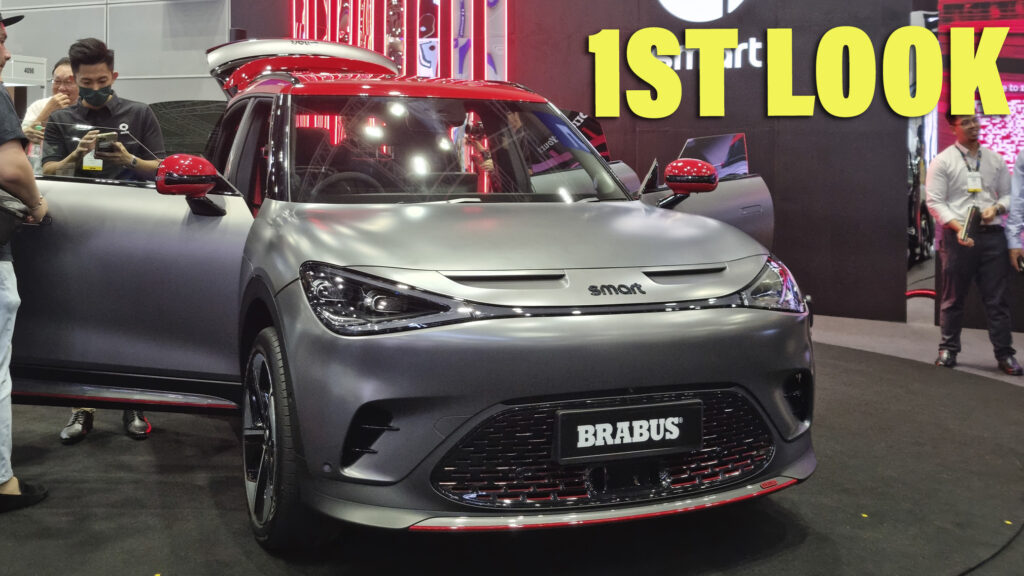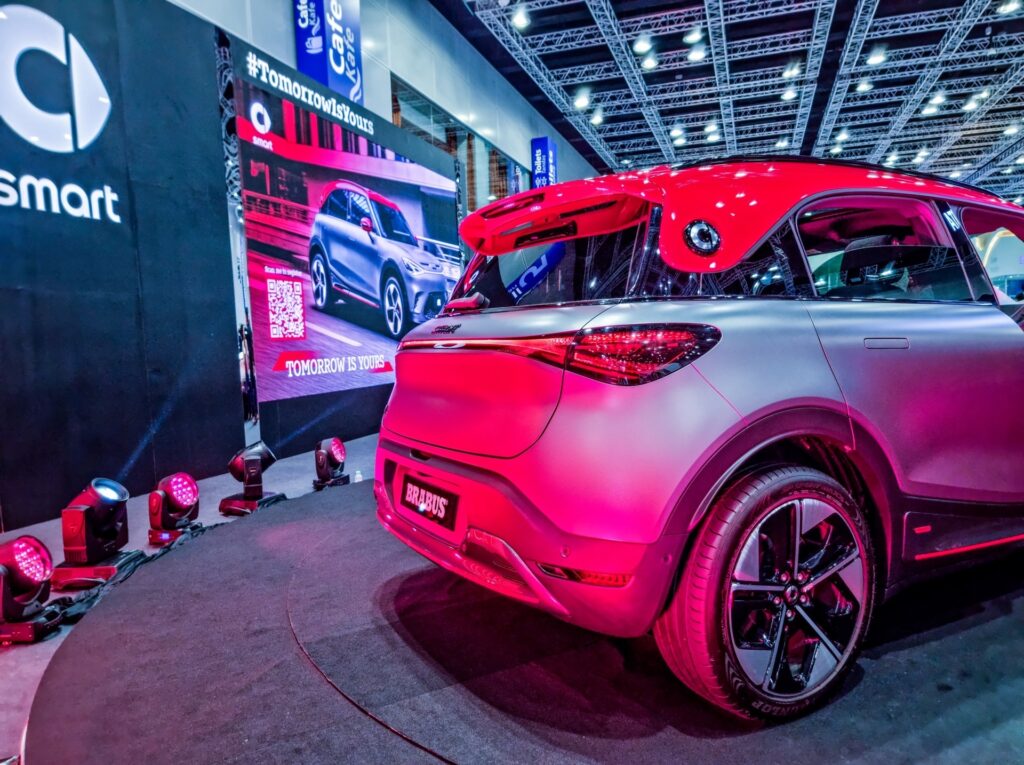The Smart #1 Brabus is here to showcase a more subtle approach to the performance electric car genre
2 hours ago
 –>
–> 
–>
We had the opportunity to take an up-close look at the Smart #1 Brabus, which made its official debut in right-hand-drive form at the International Electric Mobility Showcase 2023 in Kuala Lumpur.
In the metal, the new hotted-up collaboration between Brabus and Smart is eye-catching, to say the least, but that’s mostly down to the launch car’s two-tone treatment, combining a matte grey body with a Laser Red roof and black accents. But aside from the snazzy color scheme, the Brabus #1 is, by all accounts, fairly restrained – at least, in comparison to the tuning house’s previous body of work.
The main visual differentiator between the Brabus edition and the standard Smart #1 is a subtle body kit, which adds front air curtains, two extra intakes above the grille, a deeper rear bumper, and a discrete roof spoiler.
advertisement scroll to continue
Related: 2023 Smart #1 Brabus Packs A 422 HP Punch Despite Subtle Looks

Also of note are the dramatic 19-inch diameter two-tone silver and black wheels. Sporting 235/45R19 Dunlop Sportmaxx tires, you’d think this may be one key differentiator between the standard #1 and the Brabus. But, alas, these are exactly the same tire specs found on the base model. At least they sit in front of suitably color-coordinated red brake calipers.
Powering the Smart #1 Brabus are two electric motors, one on each axle, making it all-wheel drive. Combined, the #1 Brabus puts out an impressive 422 hp (315 kW) and 543 Nm (400 lb-ft) of torque. That’s 150 hp (115 kW) and 200 Nm (148 lb-ft) more than the #1 Premium. Smart says that the #1 Brabus will get to 62 mph (100 km/h) in 3.9 seconds, and on to a top speed of 110 mph (180 km/h).
Battery configuration on the Brabus edition follows what is found in the #1 Premium, featuring a 66 kWh battery pack. With the added load of a second motor versus the rear-motor rear-wheel-drive Premium, the Brabus’ range drops from 440 km (273 miles) to 400 km (248 miles) on the WLTP cycle, which can be considered impressive considering the boost in power the Brabus holds over the standard car. Charging performance stays the same, with the ability to harness a DC charging rate of up to 150 kW.
See Also: Brabus 600 Is A Range Rover P530 With A Pistachio Green Interior
Inside the Brabus #1, there’s a notable jump in the quality of the interior materials, but much like the exterior – bar the different colors – you’d be hard-pressed to notice any fundamental changes. That’s no bad thing, considering the #1 is a decent cabin to begin with. But apart from the red seat belts, embroidered headrest, and sporty pedals, there’s not much left to differentiate. The main highlights are the Alcantara-covered seats and steering wheel rim. But even here, both appear to be the same fundamental designs offered on the lower-spec cars, just with different materials and badging.
So while the Smart Brabus #1 does feature a smattering of sporting cues, the main event is still centered around the extra motor that lies between the front wheels. How the added power and agility offered by the uprated drivetrain translates on the road is something we’re keen to find out, hopefully sometime in the near future.
For now, is the Smart Brabus #1 deserving of the fabled tuning-houses graces? Or would you have liked to see a bit more pizzazz from this long-standing collaboration? Or, perhaps the sleeper approach is one that has its own appeal altogether. Let us know in the comments below!

 <!–
<!– –>
–> 

